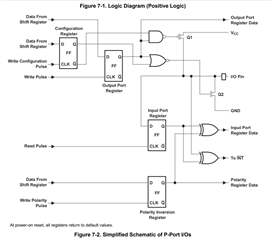Hi team,
If the microcontroller periodically checks to see if the input port has changed (inside the expander), is there a problem with open processing without using the interrupt pin?
When the microcontroller goes to check whether the input port is high or low via I2C, is it possible to know the status of the input port in real time?
Or is there a delay (if so, how long?)? I am not sure if there is a delay.
Best,
Ryu.



